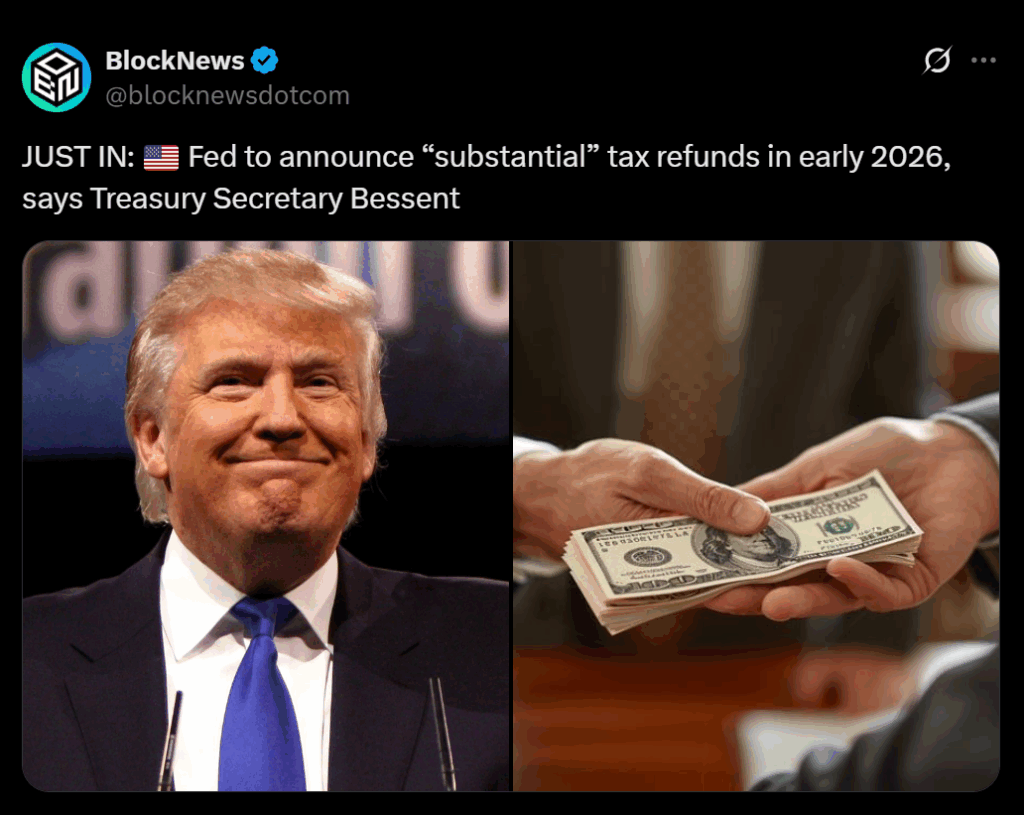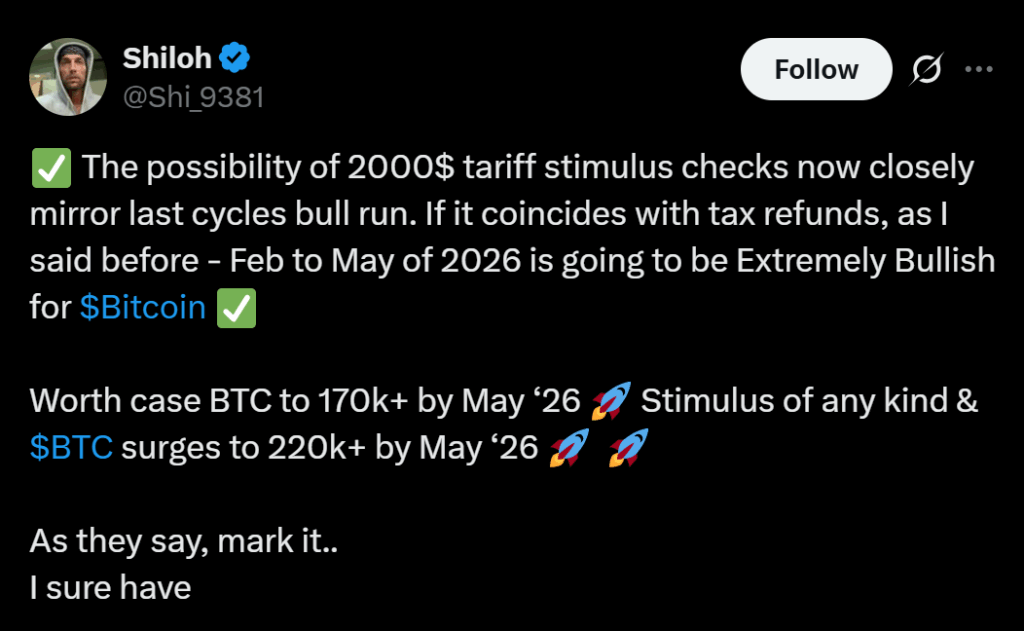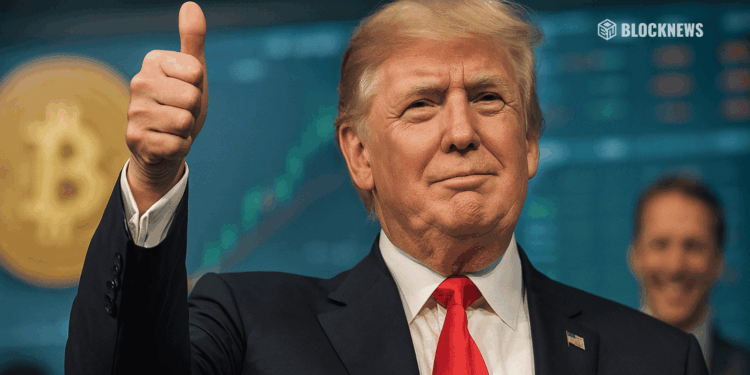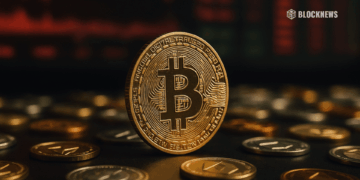- Treasury Secretary Scott Bessent says “substantial” tax refunds and higher paychecks are coming in early 2026 via the One Big Beautiful Bill, which exempts tips, overtime, and some Social Security income from taxes.
- Bitcoiners are comparing the potential $1,000–$2,000 refund wave to 2020’s stimulus checks, which coincided with Bitcoin’s explosive run from around $10,000 to over $60,000.
- While details and IRS guidance are still missing, the combined narrative of tax refunds, tariff rebates, and a resolved shutdown is already energizing crypto sentiment and could act like a stealth stimulus if it all lands at once.
Treasury Secretary Scott Bessent says that starting early 2026, many Americans should see “very good” tax refunds or noticeably larger paychecks, thanks to changes baked into the administration’s One Big Beautiful Bill.
The plan centers on excluding certain types of income from federal tax, including tips, overtime pay, and parts of Social Security income. Bessent framed it as a direct win for working families and urged people to adjust their tax withholding ahead of time so they can feel the impact sooner in their take-home pay.

The pitch from the administration is simple: deliver visible relief to the middle class without tapping the Treasury’s general funds or passing a traditional stimulus package. On paper, it’s “tax relief,” not a handout — but for a lot of households, the effect could feel very similar to getting bonus cash dropped into their accounts.
Bitcoin Remembers 2020 — And Traders Are Connecting the Dots
For Bitcoin supporters, this kind of language is déjà vu. The idea that $1,000–$2,000 average refunds could land in Q1 2026 has already flipped on a lightbulb across Crypto Twitter. To them, this looks a lot like the setup we saw in 2020–2021, when pandemic stimulus checks helped ignite a retail mania.
Back then, as $1,200 checks hit U.S. bank accounts, exchanges like Coinbase reported a spike in $1,200-sized BTC buys, and Bitcoin ripped from around $10,000 in late 2020 to over $60,000 by April 2021. That period is now widely seen as a classic example of “helicopter money” turning into speculative firepower across stocks, meme coins, NFTs — you name it.
This time, the mechanism is different — refunds and tax breaks instead of direct stimulus — but bitcoiners argue the outcome could rhyme. If millions of people suddenly have extra cash from tax tweaks, a chunk of that will almost certainly find its way into risk assets. And BTC, sitting at six figures and already treated like a macro asset by many, is high on that list.
Bitcoin has already reacted to the broader narrative, too. As odds of the U.S. government shutdown ending improved and talk of “tariff dividends” plus tax refunds spread, BTC briefly popped above $107,000, riding the idea that fresh fiscal juice could soon hit the system.

Not Everyone Is Convinced — But the Narrative Is Already Moving Markets
There are, obviously, skeptics. Bessent has not given precise numbers on average refund size, eligibility, or how broad the relief will be. The IRS hasn’t published detailed guidance either. Some economists think the plan might end up shifting money into regular paychecks instead of big one-time refunds, which would dull the “lump sum = buy bitcoin” effect.
Even with those caveats, the story alone is doing work. Markets are forward-looking, and traders don’t wait for full policy manuals before placing bets. The idea that tax refunds + potential tariff rebates could behave like a stealth stimulus is already circulating.
Economists note that if these 2026 tax refunds land around the same time as tariff-funded rebates proposed by President Donald Trump, the combination could mimic a targeted stimulus package — boosting household spending power without a classic deficit-financed bill. Whether that ends up stoking inflation or simply lifting digital assets and equities, is still an open question.
For now, Bessent’s comments are acting as both a political reassurance and a speculative spark. And if history rhymes even loosely with 2020–2021, early 2026 could bring another wave of retail-led flows into crypto — something many bitcoiners are already quietly positioning for.














